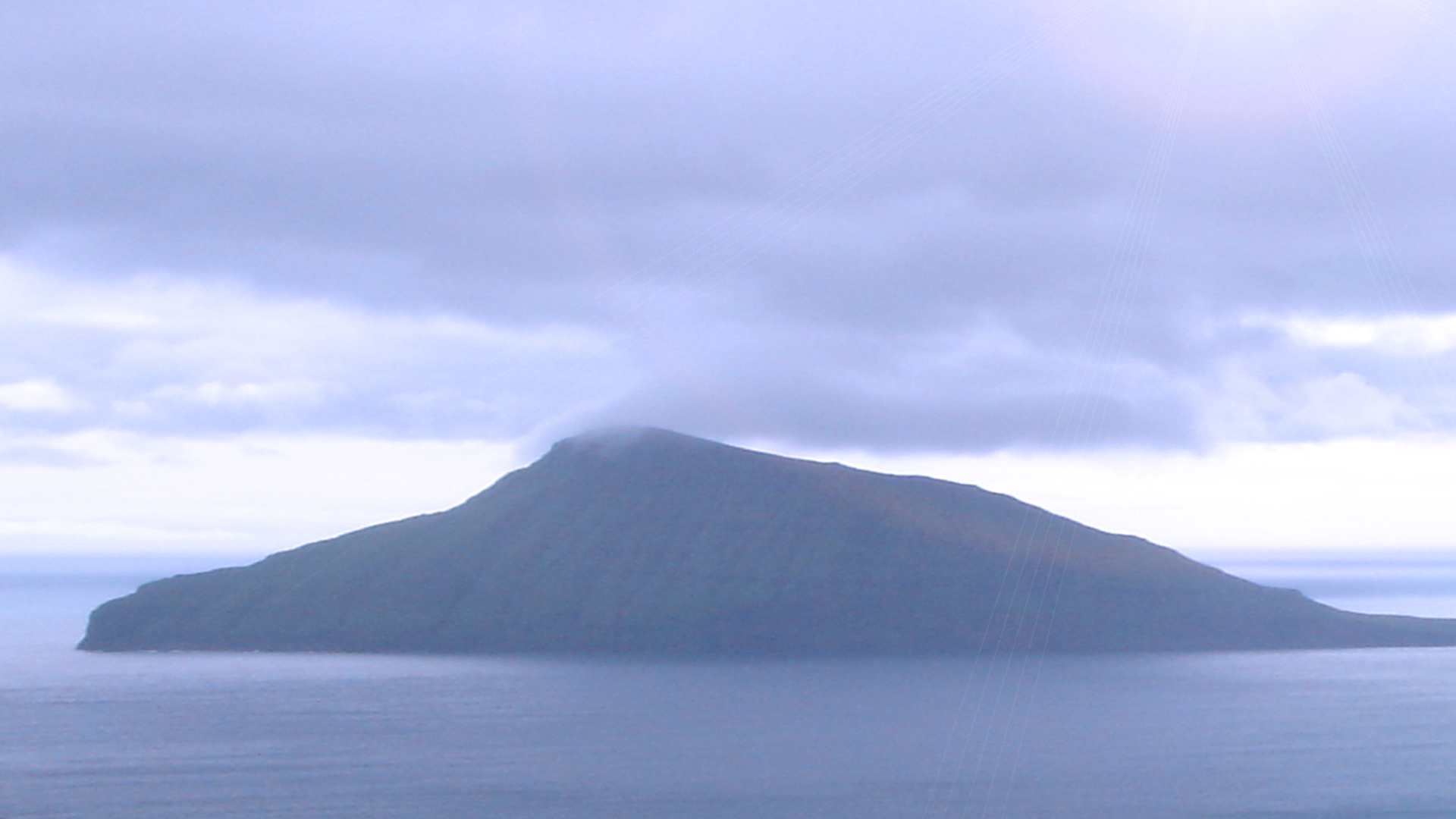從2007年起到2011年約莫五年之間,當時30歲前後、臺灣較為年輕的錄像藝術家們對於語言、記憶與認同之間的關係不約而同地產生興趣,也彷彿搭著其時方興未艾的錄像藝術風潮,以臺灣的影像世代之姿,承接上個世紀1990年代發生在繪畫、雕塑與裝置這些傳統媒材作品中的臺灣主體性論戰,實驗性地探詢影像如何表述、甚至介入語言與身分認同之間的關係,再一次地從影像與記憶的角度重提主體性問題。
1999年出版的繁體中文版《想像的共同體:民族主義的起源與散布》(Imagined Communities: Reflections on the Origin and Spread of Nationalism)一書當是這一波影像與記憶工程最主要的論述指導。在1999至2007年之間,這本書是學術圈在探討民族、國族、主體性等相關議題時絕對無法避開的一本書。我們甚至可以說,這本書幾乎讓一整個世代的人都理解到,認同的塑造是極為緊密地與語言相關,如果忽略了語言的面向,幾乎就無法適切處理認同問題。不管這批當時尚稱年輕的藝術家們是否每一個人都真地唸過這本由吳叡人翻譯的經典作品,大概他們也都被時代的氛圍推擠到這樣的問題叢結上。而在2011年之後,這個問題叢結或許是經過幾年的探索,被填充了相對堅實穩固的地基,所以失去被探索的價值,快速地在潮流的沖刷下失去了蹤影。
就時間層面而言,前述2007年與2011年兩個時間點,或許可以與一些事件相互參照。向前的事件是2007年林宏璋所策劃的「頓挫藝術在臺灣」座談會,這個座談會針對臺灣「政治藝術」的發展提出了「世代」的問題;向後可以參照的現象,是2011年左右,年輕世代大幅參與反國光石化、反核與文林苑的抗爭。多數「頓挫藝術在臺灣」座談會的與會者都認為,當時25到30歲左右的世代是個「喃喃自語」的世代,失去了其前行世代的長輩們透過藝術介入社會或改變社會的熱情,「輕/薄/短/小」與「微/密/奇/異」成了2007年前後,視覺藝術圈指稱這個(卡漫)世代的特質。而這個當時所謂的卡漫世代,與2011年之後對於社會介入與政治運動擁有極大熱情,甚至是延續到今日,熱衷於民俗與田野投入的世代,在文化性的斷代上基本上屬於同一個世代。1阿萊達.阿斯曼(Aleida ASSMANN)提醒我們,「世代」概念的成形,意味著從歷史層面來看,「歷史」在不同時代的不同集群身上都以不同的方式被重新地體驗、回憶、遺忘以及重建,因此必須在不同的世代身上考慮歷史與記憶之間的關係。2如果「文化」意味著某個群體內部所共享的價值觀在某個時間長度內穩定下來,那麼或許我們可以將2007到2011這五年內,年輕錄像藝術家們對於語言與記憶關係的探索,視為「文化」形成的一個側面,藉以考察不同藝術家在語言與記憶間找尋文化底層結構的嘗試。
語言與記憶兩者的分裂,在許家維的作品中清楚地展現出來。他2008年拍攝的《和平島故事》以基隆和平島造船廠為背景,在無人的影像中,祖母般的聲音以日文講述著「泥琥」這種虛構生物的存在軌跡,泥琥在記憶與實際空間中穿行著,在敘事中活靈活現地活動著,我們卻無法在造船廠的影像中看到牠。藝術家清楚地將造船廠這樣的空景視為「記憶的晶體」,3並在這個空景作為背景的影像進程中,讓口語與文字兩者相互分離開來:祖母敘述回憶使用的是多數人不懂的日文,字幕使用的是中文。藝術家想讓觀眾清楚地意識到日常語言使用在「聲音」與「文字(閱讀)」兩個層面上的差異。聲音的部分,日文代表著受日本教育那個世代的普遍語言使用,與國府來臺後以中文為母語的世代在「記憶」上雖然可能指涉著相同的歷史背景,但這樣的指涉,在記憶上卻儲存於不同的語言之中。那種在實體與記憶內外乘著聲音鑽進鑽出的泥琥,不只在記憶層裡挖洞,也在敘述的聲音層裡挖洞,藝術家藉由這種在記憶與語言中穿行無阻、卻在影片中未曾現身的生物,讓往往被迫用來校正族群「(客觀的)歷史」的記憶,得以轉型成現代時期已經失去效力的「傳說」。「傳說式的事件」所具有的奠基性的、重新塑造族群起源的功能,恰恰能夠在世代交替的過程中,再一次提供阻斷時間、從頭開始的效力。4

很明顯地,用造船廠無人空景來加以表述的「記憶」,在《和平島故事》中是空間性的,它承接並疊加了不同語言的地層。5這樣一種將影像當成是記憶空間的做法,在2009年《3月14日,紅磡體育館》這個作品中更清楚地表現出來,許家維讓這部隨著梁靜茹巡迴演唱會拍攝的作品,以兩種不同的投影幕來投映影像:作品播放時,單面投影在硬質螢幕,為離演唱會現場較近的敘事影像;以及背投在軟質螢幕上可雙面觀看,以城市整體為內容的事件背景式影像。藉由不同的投影讓展場空間等同於由影像所創造出來的記憶空間。藝術家希望藉由「展場空間=記憶空間=影像空間」的方式讓影像的播放成為一個具有改變認知效力的「事件」,而非只是消費性的娛樂。這樣的期待與操作策略,在接下來的《花東新村》(2009)表現得更為特出。藉由明顯是人為效果的煙霧與光影所製造的火災場景,強調性地揭示了「電影特效」是創造「(當代)傳說」的方式。而這些記憶場景以傳說的形式成為敘事,在語言層面上被結構化,並慢慢地穩定下來,超越事件發生當下的時空限制,變成接續的世代在身分與認同上的框架。6
不同於許家維將語言疊加在記憶場景上的探索,這個時期的饒加恩雖然也注意到語言與認同之間的強烈關連,不過他在意的更多是語言中的聲音使用與共享的意義兩者是如何被扣連在一起的,換句話說,也就是許家維於作品中較少觸及的語言層面如何將不同的意義元素給結構化的問題。2007年饒加恩透過《父語》這件作品,在個體的層次上揭示了前述日常口語使用在發音與意義兩者間的落差。藝術家對著一位不諳中文的外國人輕聲說話,這位外國人以正常的音量,在不知所言意義為何的狀況下,對著攝影機模仿所聽到的聲音。就觀眾的意義理解來說,外國表演者所講出來的話多數是能被猜到的,但是由於講者只是模仿,所以雖然聽者(觀眾)能猜出表演者所「講」出的話,但是在講者與觀眾間卻因為「意義」理解的斷裂,所以並未發生「溝通」。
 饒加恩,《父語》,2007。圖/饒加恩提供
饒加恩,《父語》,2007。圖/饒加恩提供
對於饒加恩而言,探問到底在什麼樣的形式中意義才會穩定下來,並能夠讓溝通發生,甚至達成有效的溝通,就變成一件有趣的事情。2009年的《臺灣抗議體》正是這樣一件在意「溝通形式」的作品。藝術家在探索溝通形式的過程中,發現我們的文化中有效的社會運動「溝通」,有其獨特的書寫方式與展示邏輯。就此而言,藝術家發現「視覺語言」亦是我們日常生活中快速溝通必備的重要環節。所以他對這種「形式」關係的探索,慢慢地從溝通的生發持續往更為抽象卻普遍的「象徵」層面移動。順著這個創作脈絡,我們可以將2011年的《30旗幟提案》視為這樣一種在「記憶–發聲–意義–溝通」的語言架構上,以象徵的手法找尋能夠統一處理「–」這種連結關係的嘗試。
藝術家對於語言形式及其心理或社會基礎的探索,並不僅限於臺灣人的語言使用,他關心所有發生在臺灣這塊土地上、沿著不同語言使用習慣的差異而導致的溝通斷裂。同樣在2011年所做的《REM Sleep》,內容拍攝的是外籍移工在較為輕鬆的狀態下對於自己夢境的描述。希望藉由語言的陳述,將夢境這種被藝術家視為潛意識的內容顯在化(語言化),以跨越外籍勞工「心理/生理」、「非臺灣日常生活使用之語言/臺灣社會」兩道溝通的壁壘,同時間在視覺與聽覺這兩個溝通管道上,重新找尋與陌生語言及文化架橋的可能性。
從較早期的作品開始,余政達就持續地以語言的限制性框架為其主要的探討對象,並以「表演性」(performativity)7作為其關切的核心。與許家維的記憶影像及饒加恩的溝通形式探索非常不同的,就在於余政達對於「(語言與記憶框架的)連續性」相對而言是較為不信任的,他在找尋的,毋寧是持續突破既有語言及記憶框架的方式。在《她是我阿姨》(2008)這個建立於偶然錄下的抗議影像的作品中,不同於抗議現場嚴肅肅殺的情緒,藝術家刻意將搞笑性的後製音效,以配樂的方式疊加在這個抗議影像上。從觀眾層面來看,影像中的事件因此全然改變了它的意義。原本認真抗議的女子,在爆笑的配音中彷彿是一個故意裝得嚴肅且過於認真搞笑的演員,影像從大聲抗議變成歡樂大爆笑。這個在後製層面上扭轉原始事件認知框架技術的發現,相對地也讓我們注意到,藝術家在同年所完成的《附身【聲】者:介紹》這件作品的特殊性。這件作品看似與饒加恩的《父語》極度類似,兩者都是黑衣人(以中文為母語者)下指令,要求被附身【聲】者模仿黑衣人的語音。不同之處在於,在《父語》中我們無法聽到下指令的黑衣人講了什麼話,但是在《附身【聲】者:介紹》中,我們卻能聽到黑衣人所下的原始指令(並在字幕上看到黑衣人所說的原文以英文字幕的方式在螢幕上方呈現,被附身【聲】者的語音以符合語言卻不全然正確的中文及羅馬拼音出現在螢幕下方)。這樣一個看似微小的差異,卻可以凸顯余政達企圖透過「比較」來展現「框架」的策略。2009年的《附身【聲】者:梁美蘭與艾蜜莉蘇》藉由來臺較久的外籍新娘的中文表達,呈現外來者在語言框架上「具溝通可能性,卻非正確語法」的弔詭,展現了溝通本身不必然建立在全然一致的語言理解上,更不需要全盤接受被結構在語言之中的集體記憶。8
 饒加恩,《父語》,2007。圖/饒加恩提供
饒加恩,《父語》,2007。圖/饒加恩提供
除了上述的語言與聲音層面之外,與饒加恩幾乎同時的,余政達也注意到溝通除了依賴口語性的聲音表達之外,還有視覺層面上的溝通形式。2010年的《形容詞舞蹈》請不同舞蹈老師將形容詞轉化為身體的姿態與動作,藉此將語言溝通拓展到藉由身體所展現的非口語性溝通,嘗試某些新的「動作」與「姿勢」的表達型態。就此而言特別的是,形容詞作為尚未被對象化與主體化的社會關係形式,在語言中往往需要依賴名詞(或者說是那些已被某個語言使用的群體確立下來、並可被指認為對象的記憶)來決定它的形式,單憑形容詞無法確立自身。藝術家選擇形容詞來發展動作,無非是先於社會一步,推動某些尚未穩定下來的記憶的對象化與主體化進程。
前述我們透過許家維、饒加恩與余政達在2007年至2011年間的作品,展現了現今約莫35到40歲的世代,當年在語言與記憶共構的層次上,探索文化之基礎,實驗並推動相對穩定的、共同的價值觀的嘗試。這樣的嘗試雖然在近年來失去了勢頭,不再有許多藝術家為其加柴添火,但是還是有一些新的發展值得我們注意。
作為許家維、饒加恩與余政達的同代人,如果我們從語言與記憶共構作為問題意識的基礎這個角度來看,王鼎曄的《若林純子》(2016)與《勇為》(2017)毋寧是有些遲到的。不過,王鼎曄這兩件作品主要是從家族史出發,將個體與家族的際遇鑲嵌在東亞及東南亞的世界史結構之中。其間世代對於政治、歷史與記憶的處理方式,恰恰與阿斯曼所謂的「世界史的私人通道」不謀而合,而不同於前述三個藝術家較為普遍性的追尋。在《若林純子》中,旁白式的聲音被模糊處理。誠如藝術家自己提到的,這樣的聲音是一種糊在一起的、幾近無法辨識的呢喃。當它疊加在模糊的記憶上時,世界史不再是個人生命的旁白,而更像是現實向夢境的擠壓,這導致個人身分認同的追尋被迫在世界史的變動間找尋可能的空隙,因而無法具有個體層面上身分認同的連續性。
 王鼎曄,《若林純子》,2016。圖/王鼎曄提供
王鼎曄,《若林純子》,2016。圖/王鼎曄提供
與此不同的,「勇為」展覽中利用打掃家裡時收集到的灰塵,在石頭上以羅馬拼音的方式拼出臺語的「兩次死亡」、「肅靜」、「祕密」、「兩個思念」、「回去」與「厝」等六件作品。灰塵以一種容易消散的、鬼魅的方式,被迫在(作為藝術家家族母語的)臺語的層面上聚集起來。無特定文字的臺語與幾乎缺乏歷史證據支撐的家族史,只能在後世子孫的記憶中拼湊起一個勉強可用卻無法清楚被辨識的面容。這樣的面容不是紀念碑式的,與沒有文字支撐的語言一樣,都不是被銘刻在石頭上而難以抹除的。相反地,在世代傳承的過程中,非常容易因為持續性的外力干預或家族成員的離散而消散。《若林純子》與《勇為》的遲到,或許正是在語言層面上的文化實驗完成後,進一步提出「記憶政治」必須在硬體架構上被建構起來的那一步。